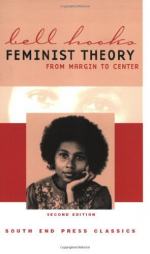
|
| Name: _________________________ | Period: ___________________ |
This test consists of 5 multiple choice questions, 5 short answer questions, and 10 short essay questions.
Multiple Choice Questions
1. The author opens the Preface to the first edition of the book with a description of which group and its experiences in life?
(a) Black Americans living in a small town in Kentucky.
(b) White upper class American women.
(c) White French feminists.
(d) Upper class black professionals.
2. Who has portrayed the relationship between feminism and the family in this way? (See question # 61)
(a) All men.
(b) Most feminists hold this view.
(c) Outsiders to the movement and sometimes feminists in the movement who want to create women-only communities.
(d) The child protective services.
3. The author cites Lillian Hellman's autobiography as an example of what kind of phenomenon?
(a) White women projecting mythical power and strength on black women while presenting themselves as powerless.
(b) An early white feminist who listened to women of color.
(c) White women being afraid to tell their domestic servants what to do.
(d) An rare example of working class writing.
4. How were black women's efforts received by white feminists?
(a) They were mostly met with resentment and derision.
(b) They were completely ignored.
(c) They were openly embraced.
(d) They were seen as disorganized.
5. Overall, what does the author think about the effects of the feminist movement?
(a) It has not done enough to reach out to both genders.
(b) It has created amazing changes in the lives of girls and boys, and women and men.
(c) The feminist movement has not changed the educational landscape.
(d) The movement has had positive effects, but mostly in the academic world.
Short Answer Questions
1. What does the author say about the statement: "I am a feminist"?
2. What did she notice about white female students at the time?
3. What does it ultimately mean for the author when women behave like white men?
4. In the Preface to the first edition (1984), what general theme does the author present?
5. In the author's view, is it valid to define feminism in terms of creating a sense of community?
Short Essay Questions
1. Why is educating women a "feminist agenda," as the title to Chapter Eight suggests?
2. From the author's perspective, is theory related to experience in her discussion in Chapter One?
3. Describe the kind of power that the author sees in communities of economically disadvantaged women.
4. Which two kinds of power does the author discuss in Chapter Six, "Changing Perspectives on Power"?
5. In the Preface to the Second Edition (January 2000) entitled "Seeing the Light: Visionary Feminism," what does the author have to say about her specific approach to feminism and the reactions it created?
6. Does the author still believe in her work?
7. Overall, what do Chapters Two and Three develop for the reader with regard to feminism?
8. What reasons does the author give for people finding themselves at the center of society?
9. In the Preface to the First Edition (1984), what reasons does the author give for people finding themselves on the margins of society?
10. Is true sisterhood, i.e. solidarity in the struggle to achieve feminist goals, supported by society, according to the author?
|
This section contains 1,008 words (approx. 4 pages at 300 words per page) |

|




